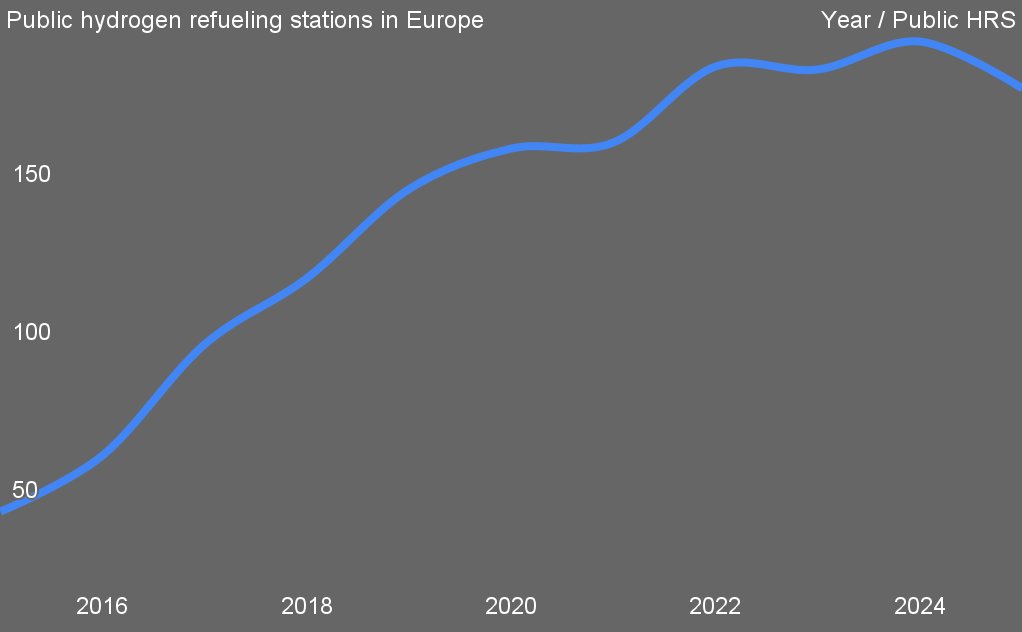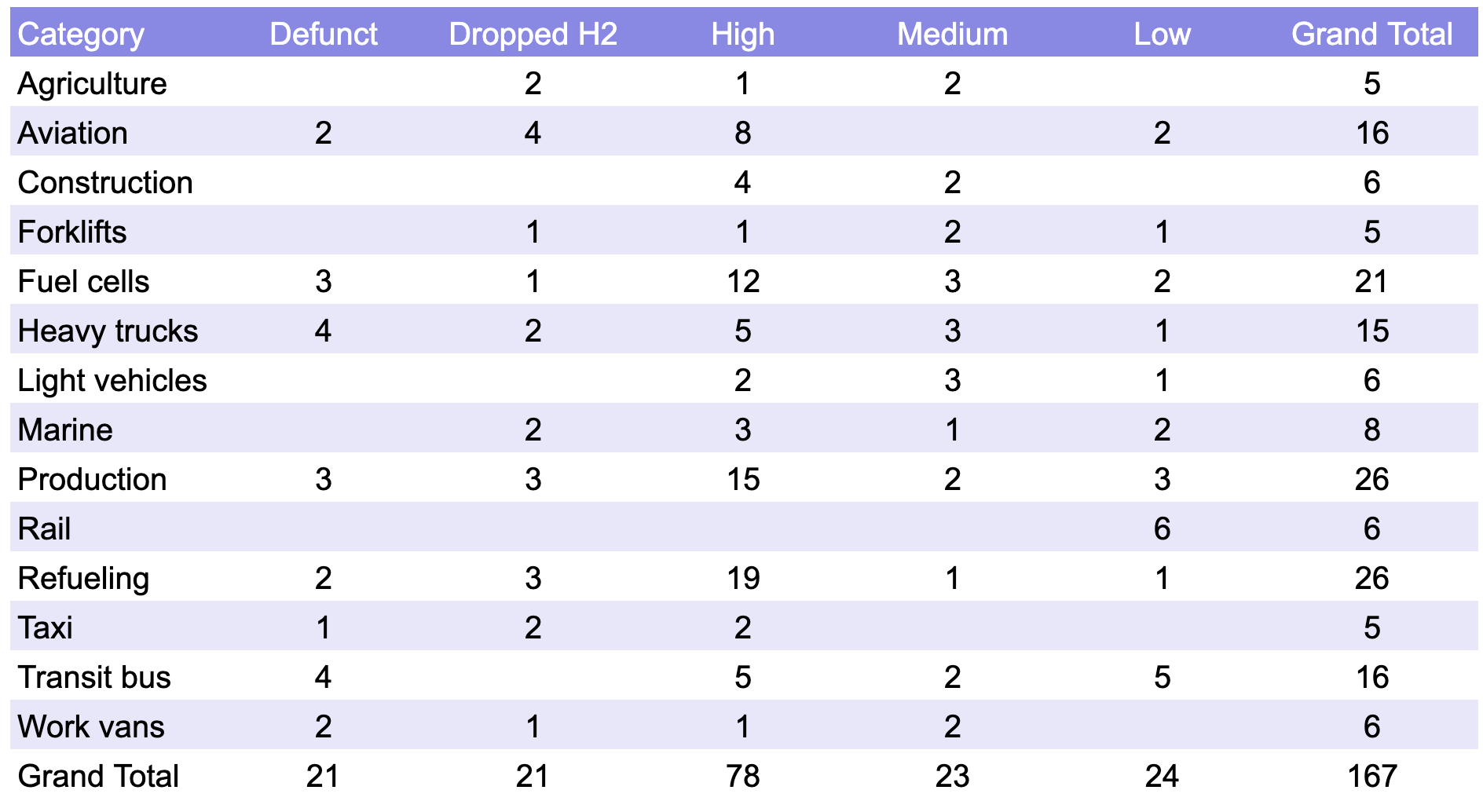Support CleanTechnica’s work through a Substack subscription or on Stripe.
Austria has quietly joined the list of countries that have stepped away from hydrogen as a transportation fuel. In April 2025 OMV, the Austrian oil and gas major that had operated all of the country’s public hydrogen refueling stations, announced that it would be shutting them down by September. There were only four sites, in Graz, Asten, Innsbruck, and Vienna, but they represented the entire public-facing network.
By late summer, OMV confirmed that Vienna’s Floridsdorf location had already closed, with the other three following in quick succession. That left Austria with no public hydrogen refueling options at all. One private depot in Wiener Neudorf continues to operate for a fleet, but the point remains: ordinary drivers can no longer find hydrogen anywhere in the country. OMV was direct about its reasons. Demand for hydrogen cars never materialized, stations were expensive to keep open, and the small number of customers could not justify ongoing maintenance and safety costs. I wasn’t able to determine how many drivers this impacted, but there weren’t a lot.
Germany tells a similar story, but the scale is larger and the symbolism stronger. For years, Germany had positioned itself as Europe’s most committed hydrogen market. The government invested heavily, carmakers promoted models, and the H2 MOBILITY consortium rolled out a network that at its peak included close to a hundred public 700 bar stations.
In early 2025 the operator announced a major retrenchment. Twenty-two of those stations would be closed in two waves. Eleven were taken offline by the end of March, with another eleven scheduled to shut down by the end of June. The locations were not random. They were smaller stations in places where demand was particularly low. Cities like Bonn, Flensburg, Ulm, and Aachen lost their only public hydrogen outlet. In Berlin, Hamburg, Munich, and Frankfurt, individual sites were cut, reducing the already limited convenience for drivers.
H2 MOBILITY explained that the economics no longer worked. Most of the stations being closed had been built in the 2010s with government and industry funding at a time when forecasts still suggested that hundreds of thousands of hydrogen cars might be on the road in the 2020s. That never happened. By 2025 the number of fuel cell cars in Germany was measured in the low thousands, and many of those were fleet or demonstration vehicles. Private buyers were rare.
Stations were pumping only a fraction of the hydrogen needed to cover their costs. Compressors and chillers require regular servicing whether one car shows up a day or fifty. Safety inspections and permitting are fixed costs as well. The operator described the closures as “network consolidation,” framing it as a pivot to larger, higher-throughput stations that could serve trucks and buses instead of cars. That’s going to end poorly for them as well.
The headlines that once trumpeted Europe’s leadership in hydrogen cars are now being replaced with closure announcements. Austria’s last four stations being shuttered is symbolic, but Germany cutting 22 in six months is more than symbolic. It signals that even in the heart of hydrogen enthusiasm, economic reality is hitting. This is not about temporary downtime or planned upgrades. These stations are not coming back.

The numbers make the trajectory unmistakable. Europe had 38 public stations in 2015. By 2019 the count had risen to 140, and by 2022 it reached 179. That growth has flattened since. In 2024 it was 187. By the middle of 2025 the European Hydrogen Observatory still reported 186, but that figure already reflected the first 11 German closures. With the second wave of 11 closures in Germany and OMV’s four in Austria, the total drops to about 172 by year’s end. A handful of openings, like Greece’s first public station in June 2025, do not alter the downward trend. What is being lost far outweighs what is being added.
Operators and governments alike have explained the reasons. Demand has not kept pace with early forecasts. A station can cost several million euros to build and hundreds of thousands a year to maintain. Hydrogen fuel remains much more expensive than electricity on a per kilometer basis. Even generous subsidies did not change driver behavior.
Electric vehicles became better, cheaper, and more convenient every year, while hydrogen cars remained rare and costly. For OMV, the decision to close was framed as a matter of focusing on areas with real market demand. For H2 MOBILITY, the closures were portrayed as reallocation of resources to stations capable of serving heavy duty fleets, where many in Europe still have illusions that it might be able compete. In both cases, the subtext was clear. Passenger cars are no longer a target market.
This is not confined to Austria and Germany. France built a handful of stations but never scaled. The UK supported some pilots but left them stranded. Scandinavia saw early enthusiasm collapse into closures and mothballing. Southern Europe hardly got beyond a few demonstration projects. Public drivers are left with little or no access.

This is part and parcel of my hydrogen transportation deathwatch this year, and completely predictable. Major operators like Shell left the public hydrogen refueling space over the two years from 2022 to 2024, closing stations on two continents and walking away from tens of millions in free government money because it wasn’t worth it. As I noted in my analysis of HTEC’s economics in British Columbia, Canada, the busiest station might be making $40,000 a year and costing hundreds of thousands to keep operating. That might make sense to take market share in a growth market, but it never made sense for hydrogen refueling because it was never going to be a growth market.
The implications are clear. Europe’s road transport decarbonization will be driven by electricity. Passenger cars are electrifying rapidly, and charging infrastructure is spreading everywhere. Bus fleets are following the same path as more capable battery buses arrive and high power chargers are installed. Trucks are beginning to tap into megawatt charging corridors, and manufacturers are preparing to deliver electric heavy duty models at scale. Hydrogen is being pushed to the margins.
Austria’s empty map and Germany’s shrinking network are milestones in that process. They confirm what the numbers and the economics have been saying for years. Public hydrogen stations are not just stalling, they are being dismantled. The deathwatch continues, and the evidence is mounting that hydrogen as a fuel for road transport is a dead end.
Sign up for CleanTechnica’s Weekly Substack for Zach and Scott’s in-depth analyses and high level summaries, sign up for our daily newsletter, and follow us on Google News!
Have a tip for CleanTechnica? Want to advertise? Want to suggest a guest for our CleanTech Talk podcast? Contact us here.
Sign up for our daily newsletter for 15 new cleantech stories a day. Or sign up for our weekly one on top stories of the week if daily is too frequent.
CleanTechnica uses affiliate links. See our policy here.
CleanTechnica’s Comment Policy

